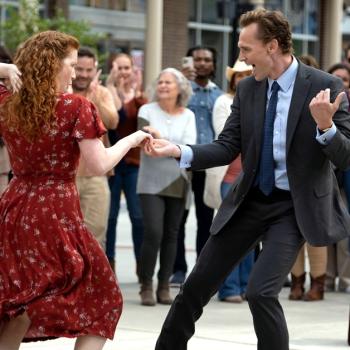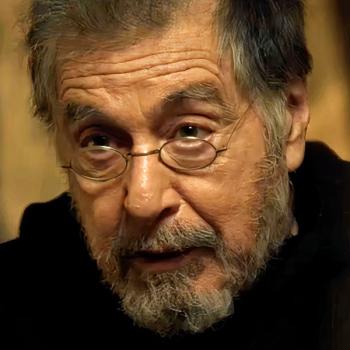With the announcement of shows like ABC’s midseason comedy “The Real O’Neals,” which uses a stereotyped caricature of a Catholic family for laughs, it’s tempting for folks like us to throw up our hands and yield the field, to turn off our TVs and vow that neither us nor any of our kin will have anything to do with the entertainment industry.
Don’t.
We’re on the precipice of an explosion of content (the umbrella term for anything involving words and pictures), available on a variety of platforms and devices, from producers and creators that no one’s even heard of yet.
Never in human history has so much been available to so many, much of it done on budgets that are a mere fraction of mainstream productions.
With several social-media platforms — including Facebook video and live-streaming via Periscope on Twitter — along with YouTube and more, the potential for anyone to become a broadcaster or build a channel and a brand of their own has never been greater. And there’s no reason why smart, sharp, creative Catholics can’t be out there in the marketplace with everyone else.
All you need to remember is — if it’s good enough, they’ll watch; and if it’s not, they won’t.
The democratization of media has put the user and the viewer in control. People may be watching TV differently, but that doesn’t mean they’re watching less — quite the opposite.
A couple of weeks ago, during the recent Digital Hollywood conference in Los Angeles, I sat down with Hilary Perchard, the British-born, San Francisco-based vice president of business development for Sky (formerly British Sky Broadcasting, or BSkyB), a British telecom company offering digital TV, and broadband and telephone services, to the U.K. and beyond.
Said Perchard, “We’re a pay-TV operation in Europe. We have 22 million subscribers, thereabouts, in seven countries. We’re out here looking for innovation and ideas that we can take back to our local market.
“Sometimes we inviest in some of them, but most of the time, it’s just about finding interesting partnerships and interesting reationships.”
Perchard concentrates on the digital and technology side, while his Los Angeles-based counterpart visits studios and production companies in search of more traditional TV fare.
But those lines are becoming blurred.
“I do get involved in content,” Perchard said, “because we increasingly look at online video companies and go, ‘How do we engage in that space?’ One of my observations is, at this point, that video as a medium is exploding.
“A couple of months ago, I was talking to Facebook, and they told me that they had 3 billion video views a day. Now, last week, they were at 4 billion a day.”
Online video is growing exponentially. There are now YouTube Spaces in Los Angeles, London, Tokyo, New York, Sao Paulo and Berlin, offering state-of-the-art studio facilities to professional creators and amateur owners of YouTube channels alike, along with classes ranging from production skills and analytics to building a business.
One panel at Digital Hollywood addressed this new paradigm, as TV networks and studios sometimes have to come hat in hand to YouTube stars, who see TV as merely another promotional outlet for successful platforms they’ve already built online. And sometimes, the YouTubers — including Millennials making six and seven figures a year from their entrepreneurial efforts — don’t need TV at all.
But don’t take this to mean that TV — in terms of professionally produced dramas, comedies, reality shows, news and sports — is going away, despite media pundits who keep declaring it dead.
“We take the reverse view,” said Perchard, “that TV is in growth, and it’s in faster growth than it’s been for a long time. People are watching more, consuming more, consuming in different ways. You’ve got to embrace the new ways in which people are watching TV and watching video.
“That’s why it’s important to be in TV Everywhere, to be in On Demand, to engage with social video and with video sharing.”
Viewers may now watch their TV shows in binge marathons, rather than one episode a week; from a DVR recording; plucked off an On Demand service; or streamed via Netflix or Hulu.
The programs may be classics from the TV vaults, episodes and seasons of current shows produced for broadcast TV or for cable, or original programs produced for the Web — like the racy online soap, The Bay — or for the streaming services, including such adult fare as Netflix’s “House of Cards,” or even kids’ shows, like Netflix’s Bible-based “Veggie Tales in the House.”
While viewing figures for traditional broadcast and cable TV have gone down, that’s, as much as anything else, a reflection of the thinning out of the audience, as viewers scatter among many options.
“Video is becoming democratized,” said Perchard, “in that anybody can create video and ultimately be successful.”
He continued: “The question we ask ourselves, is, are there going to be new stars and new celebrity forms created, and new production companies, that we haven’t even considered yet?”
Undoubtedly, the answer is yes. The only real mystery is who these new people are going to be, and what they will produce. And if we’re not in the mix, whether with faith-based content or just content from faithful Catholics — or our content stinks — then we have no one to blame but ourselves if we’re not getting the Word out.
“If you’ve got great content,” said Perchard, “consumers will pay for it. If you’ve not got great content, consumers won’t be willing to pay for it.”
Image: Wikimedia Commons














